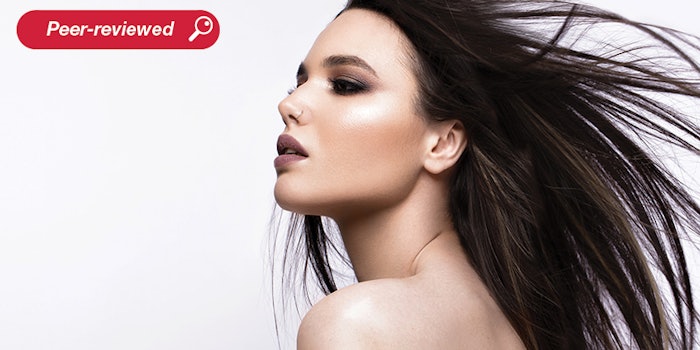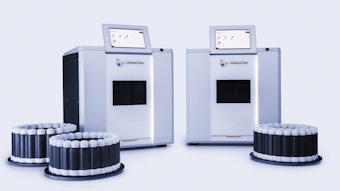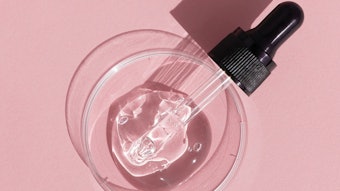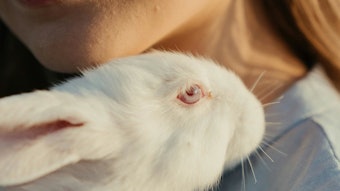
Read the full article in the June 2021 digital edition. . .
From a global perspective, dandruff control1 products have traditionally utilized three actives: zinc pyrithione, climbazolea and piroctone olamine. All three are primarily effective against the yeast Malassezia spp., which produces oleic acid and is linked to dandruff formation. These well-known ingredients have been used in personal care for decades.
More recently, a molecule was introduced with a different mode of action that relies on Malassezia’s dependence on triglycerides (esters) from sebum on the scalp:2 propanediol caprylateb. This naturally derived ester technology3-5 is structurally similar to the triglycerides in scalp sebum. When Malassezia’s lipases cleave the ester, it releases the caprylic acid therein, which reduces Malassezia activity through and auto-kill mechanism and thereby reduces dandruff; this mechanism is described in detail elsewhere. 6
However, several reports in literature have indicated that Malassezia activity is only part of the story. These publications highlight that a balance between Cutibacterium and Staphylococcus in the scalp microbiome plays an important role as well.7-9
This article therefore explores the effects of propanediol caprylate on these two entities in the scalp microbiome, as well as on sebum and dandruff, in parallel to its mode of action against Malassezia. Analyses are made of subjects’ dandruff and scalp microbiomes in vivo, and sebum excretion is measured in a sebaceous gland model. In addition, sensorial properties, which have previously been described, are assessed.10-12
Dandruff and Microbiome Test Protocol
An exploratory in vivo study was carried out in nine volunteers with dandruff (male and female, 18-55 years of age). After a conditioning period of 14 days using a neutral shampoo, the volunteers applied a leave-on formulation (see Formula 1) once daily using 0.5% propanediol caprylate (5 subjects) or the placebo (4 subjects) by systematically spraying it onto the scalp (approximately 0.03 µL propanediol caprylate/cm² skin). During the product application time of 4 weeks, the subjects were instructed to wash hair every 2-3 days using the neutral shampoo provided for the conditioning phase. The efficacy of the product was rated by subjects via a questionnaire, and a dandruff score was given by a trained technician based on visual evaluations according to Piérard-Franchimont13 on a scale of 0 (no scaling) to 10 (heavy, large, thick white or yellow flakes adhering to the scalp) before and after 4 weeks of application.
Microbiome sampling was performed by swabbing before the first product application and after 4 weeks of application. Swabbing was performed on two capillary lines on the right side of the scalp by a trained technician using pre-moisturized swabs. The head of the swab was then aseptically cut from the handle and stored in a sterile Eppendorf tube on dry ice. Following this, DNA was extracted and sequenced. To evaluate the microbiome composition, bacterial 16S rDNA primers targeting the V3-V4 region were used for sequencing with a desktop sequencerc.
Sebum Secretion Tests
Effects on sebum secretion were evaluated using a micro-dissected human sebaceous gland model. The human sebaceous glands originated from two different female donors (ages 45 and 58), upon informed consent.
The glands were micro-dissected from the skin samples, pooled into groups of eight and cultured for up to 6 days. Sebaceous glands were cultured in a 24-well plate and immersed in 500 μL of in-house sebaceous gland medium. After 24 hr of acclimation, the sebaceous glands were untreated (or not = control) or incubated in a medium containing capsaicin (positive control) or propanediol caprylate at different concentrations for 5 days. This medium was refreshed twice, specifically on days 3 and 5. On day 6, the glands were harvested and used for the quantification of lipids and proteins.
After acclimation of the organ culture on days 1 and 6, the viability of the sebaceous glands was assessed by incubation with Resazurin (1:11 v/v) for 2 hr. At the end of the incubation period, an aliquot of the medium was harvested and read with a fluorometer (excitation = 560 nm, emission = 590 nm). The viability in each well was measured as the difference in percentages between days 6 and day 1.
The sebaceous glands were then harvested and their lipid and protein contents were quantified, first by homogenizing them in isopropanol to extract lipids and leave the protein undissolved. An aliquot of isopropanol was withdrawn to measure the lipid content, whereas the remaining amount was evaporated in a vacuum centrifuge. The obtained dry pellet was minced again in the presence of protein lysis buffer.
Both the lipids dissolved in isopropanol and the protein dissolved in lysis buffer were quantified by infrared spectroscopyd. The total lipid amount was obtained by normalizing the quantity of the lipids to the proteins (i.e., mg of lipids/mg of proteins).
. . .Read more in the June 2021 digital edition. . .
References
- Symrise AG. (2021, Jan). Dandruff control–simply cleaner scalp. Available at https://www.symselect.com/dandruff-control.
- Genrich, F., Koch, C., Lange, S., Bugdahn, N. and Schmaus, G. (2020, Dec). Next generation dandruff control. SOFW Journal 146 8-13.
- Mayser, P. (2015, Apr). Medium chain fatty acid ethyl esters–activation of antimicrobial effects by Malassezia enzymes. Mycoses 58(4) 215-219.
- Mayser, P., Pesaro, M., Schmaus, G., Grieger, J. and Bugdahn, N. (2019, Feb). WO2020160741A1, Fatty acid esters as anti-Malassezia agents. Available at: https://www.sumobrain.com/patents/wipo/Fatty-acid-esters-as-anti/WO2020160741A1.html
- Koch, C., Nordzieke, S., Grieger, J., Bugdahn, N., Genrich, F. and Lange, S. (2020, Jan). WO2020160905A1, Antimicrobial activity of fatty acid esters and combinations thereof. Available at: https://patentscope.wipo.int/search/en/detail.jsf?docId=WO2020160905
- Koch, C., Pesaro, M., Schmaus, G. and Mayser, P. (2020, Feb). Medium chain fatty acid esters–optimizing their efficacy as anti-Malassezia agents. Mycoses 63(7) 704-710.
- Clavaud, C., et al. (2013, Mar). Dandruff is associated with disequilibrium in the proportion of the major bacterial and fungal populations colonizing the scalp. PLOS ONE 8(3).
- Xu, Z., et al. (2016, May). Dandruff is associated with the conjoined interactions between host and microorganisms. Scientific Reports 6 24877.
- Saxena, R., et al. (2018, Oct). Comparison of healthy and dandruff scalp microbiome reveals the role of commensals in scalp health. Front Cell Infect Microbiol 8 346.
- Pesaro, M., Lange, S. and Kohlen, R. (2020, Jan). WO2020160904A1, Active agents for skin and hair care with physicochemical modifying properties. Available at: https://patentscope.wipo.int/search/zh/detail.jsf;jsessionid=969DEEE78314F6990B90D095167A2EBB.wapp1nB?docId=WO2020160743&_cid=P11-KDWG3A-38200-35
- Pesaro, M., Lange, S., Kohlen, R. and Koch, C. (2019, Feb). WO2020160742A1, Active agents for skin and hair care with sensory modifying properties. Available at: https://patentscope.wipo.int/search/en/detail.jsf;jsessionid=16066CA52A8B698D7BB5D789B89274EC.wapp1nB?docId=WO2020160742&_cid=P11-KE1S6X-70195-9
- Thomaz, F., et al. (2020, Oct). Evaluation of sensorial benefits for hair fibers provided by an innovative dandruff control agent. IFSCC 2020 Virtual Yokohama Congress.
- Piérard-Franchimont, C., Piérard, G.E., Arrese, J.E. and De Doncker, J. (2001, Apr). Effect of ketoconazole 1% and 2% shampoos on severe dandruff and seborrhoeic dermatitis: clinical squamometric and mycological assessments. Dermatology 202 171-176.
a Crinipan AD (INCI: Climbazole) and
b Crinipan PMC green (INCI: Propanediol Caprylate) are products of Symrise.
c MiSeq System, Illumina, Inc.
d Direct Detect Spectrometer, Millipore Sigma










